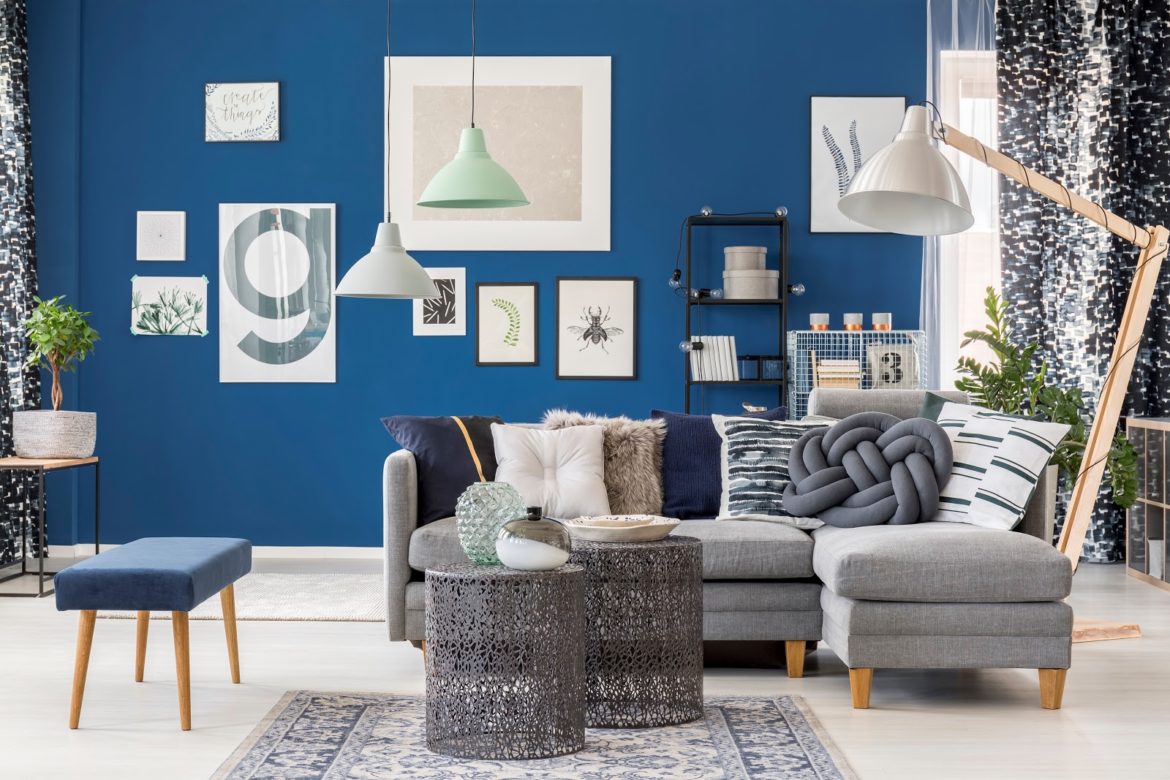The appropriately named living room is a multipurpose room that is used for many different things. We use this room to watch our favourite shows, catch up with friends, read a good book, and sometimes curl up for a nap. With so many things going on in our living rooms, it can be difficult to properly design a room that suits its multiple needs. If you’ve ever felt like your living room could use a little help or declutter, try these not-so-secret tips to get a designer approved living room.
1. Function and Flow First
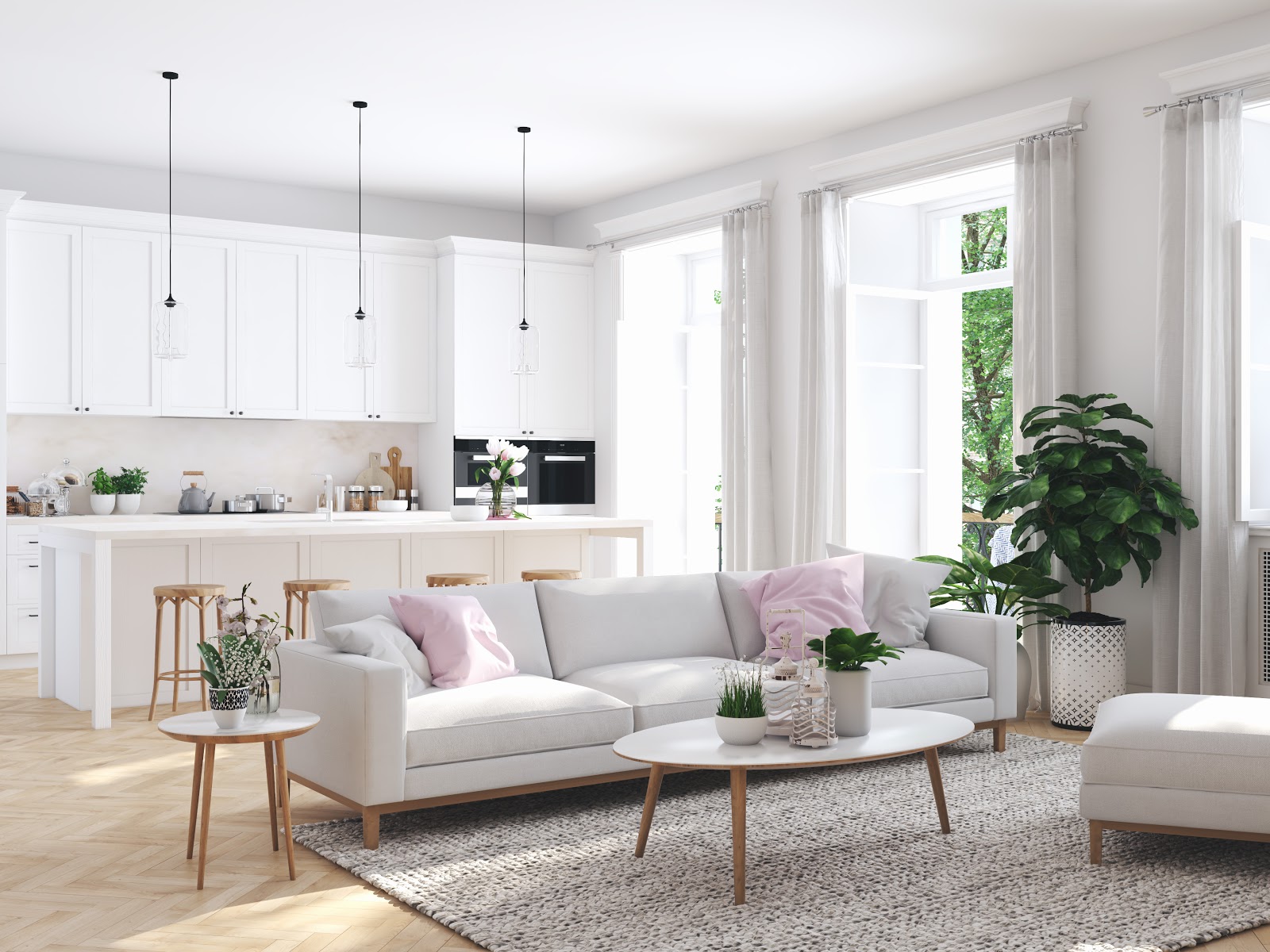
Sometimes a layout can look great but the function is nonexistent. For example, if you have to awkwardly turn your head to watch TV, the function is off. Designers think about how a space will be used and then they decide where the pieces will go based on that. They also work to place furniture so that everything flows with no obstructions. While you may already have all of your pieces, you can still think like a designer by prioritizing function and flow in your layout.
First, take into consideration how you get into and out of the room. Then make sure to keep those pathways clear. Don’t place a large plant in the middle of a walkway if you know you’ll be pushing your way through it every time you enter. Ideally, your room should follow the 3-foot rule. This means that you should have about 3 feet of walking space around the perimeter of the room to comfortably move throughout it. Any furniture pieces that have doors or drawers typically need 3 feet to open as well. Keep this rule in mind so you’re not opening drawers and knocking lamps over.
2. Furniture to Follow
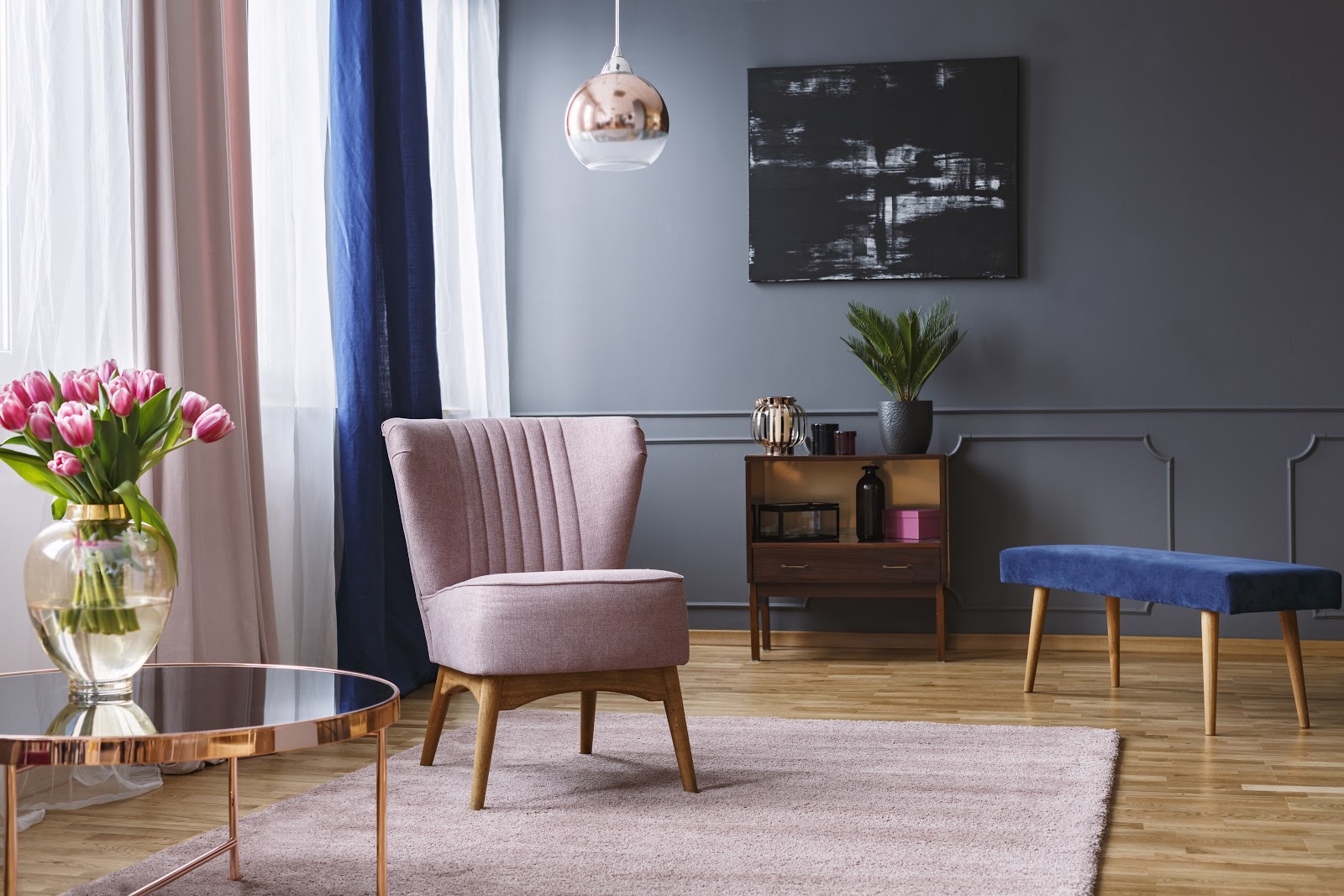
Once you have the function and flow of your living room realized, it’s important that your furniture placement helps support it. It can be very tempting to push all of our furniture up against the walls and call it done. While you may think this is the best use of space, it actually creates a dead zone in the middle of your floor that goes mostly unused.
Designers recommend pulling furniture out at least 12 inches away from the wall. This helps to create a cozier and more inviting space that encourages conversation. If you have the luxury of a large living room, try grouping furniture together to create multiple conversation spaces throughout the room. Even in smaller spaces, pulling your furniture a little bit away from the walls will help the room look inviting as opposed to cramped.
3. Rug Placement Matters
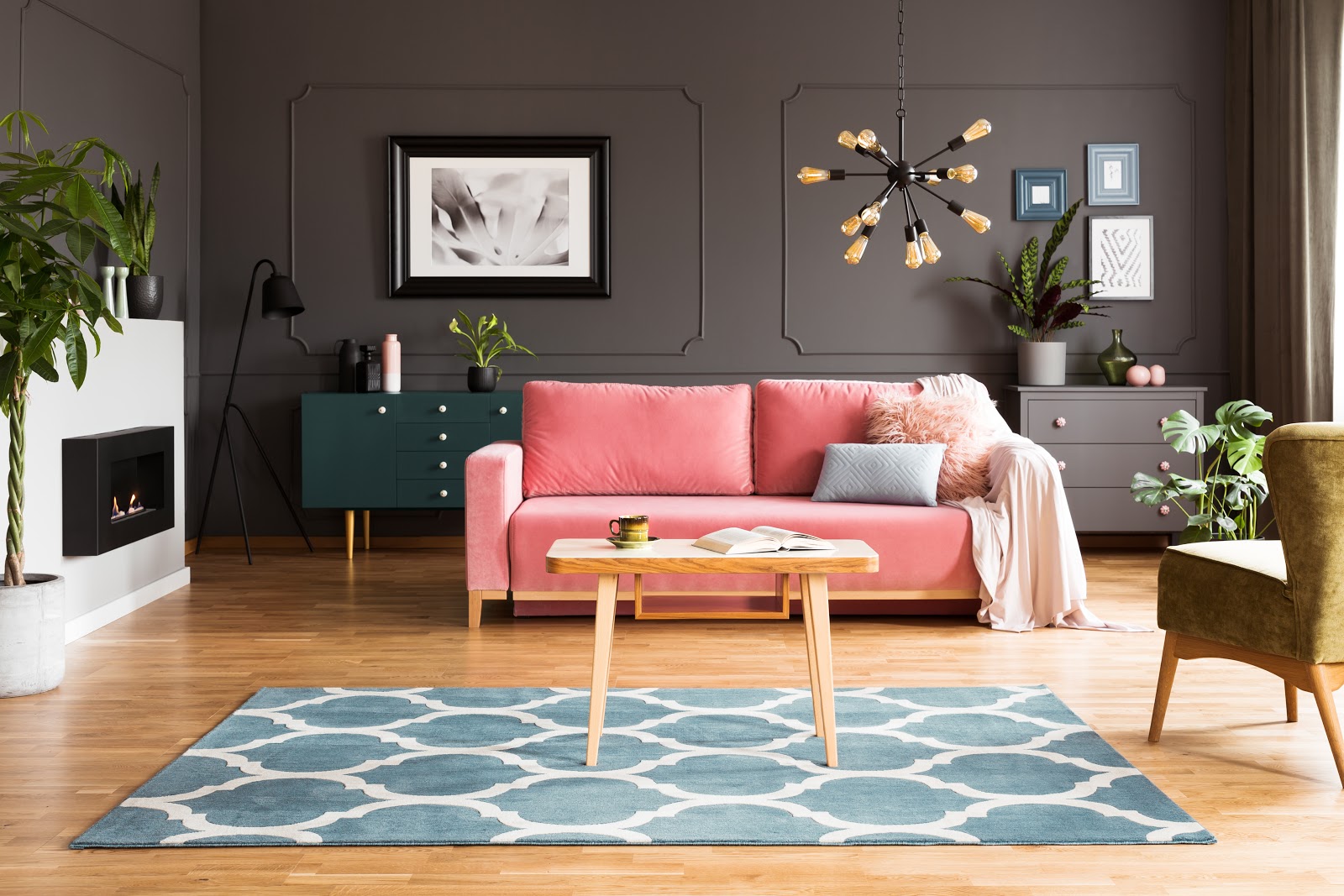
Even with the right function and flow in your living room, the balance can easily be thrown off by an ill placed rug. To ensure that doesn’t happen, designers have no shortage of tricks when it comes to properly placing a rug. The size of the rug will have the greatest impact on how it looks in the space. It’s important you choose a rug that fits the space and not try to make the space fit the rug. You may need to try multiple rugs until you find one that works.
Living room rugs typically come in three sizes: 5 x 8, 8 x 10, and 9 x 12. The smaller the rug, the less furniture will rest on it. If you have a small rug, let the coffee table stand on it, but keep your couch and chairs off it. For medium sized rugs, it’s best to only have the front two legs of your couch and chairs on it. For large sized rugs, try to get all four legs of your couch and chairs on the rug if space will allow for it. Keep in mind that designers recommend keeping 18 inches of bare floor exposed around the edges of large carpets. Besides visual appeal, another great thing about proper rug placement is that it can help visually divide and identify sections of your room.
4. Define Your Zones
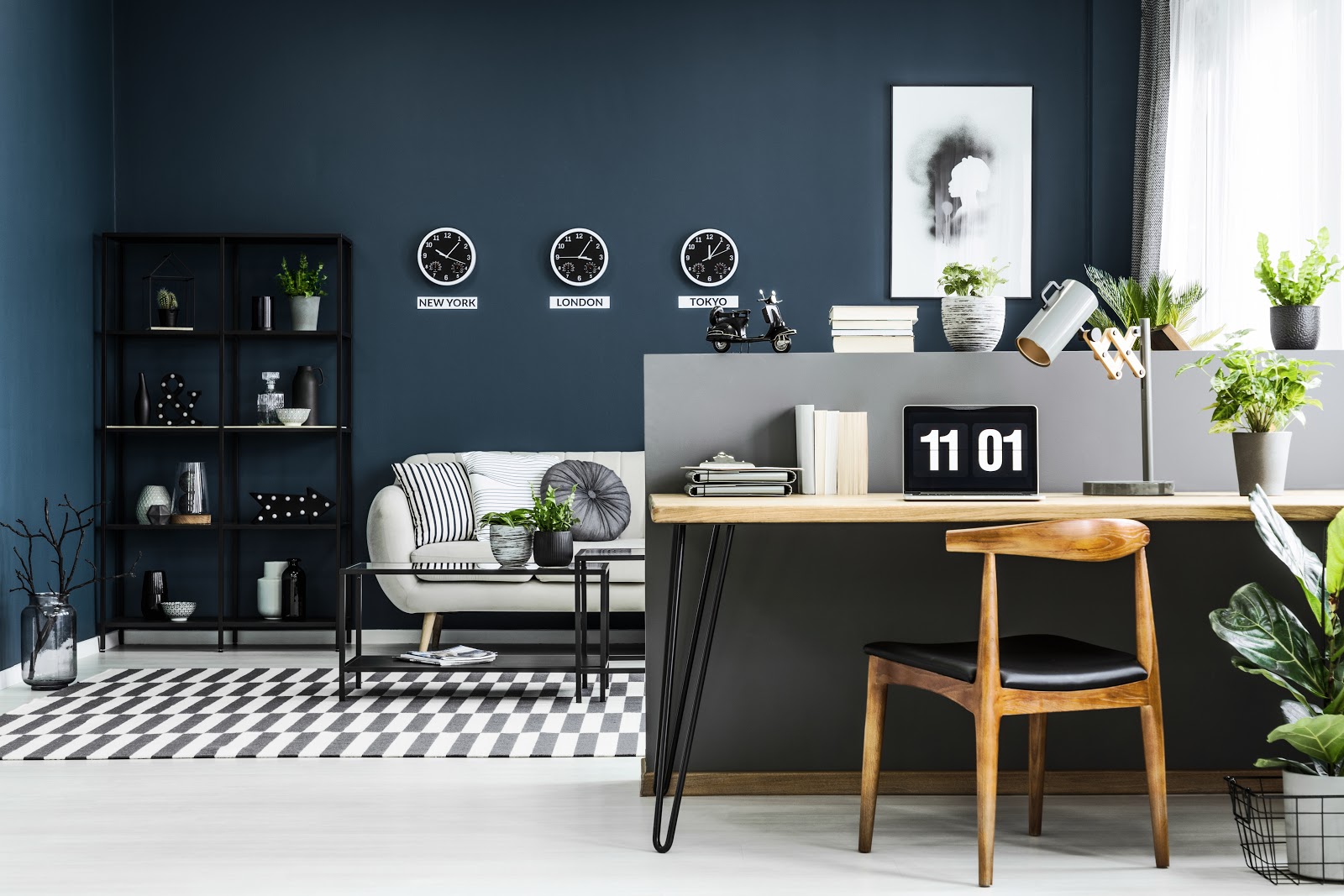
As we all know, there are a lot of different activities going on in the living room. All at once it may be your TV room, library, office space and gym just to name a few. To help visually break up the space, designers recommend creating designated zones for all of your activities. This way your space will look organized and intentional as opposed to cluttered and chaotic.
You can create zones in the same room by using things like art, paint colours and rugs to help visually define them. For example, if you have your couch and TV in the middle of the room, try creating an office nook with an accent wall and rug in the corner. While you haven’t physically changed the layout of the room, these details help visually define the office zone as its own space within the living room.
5. Light It Right
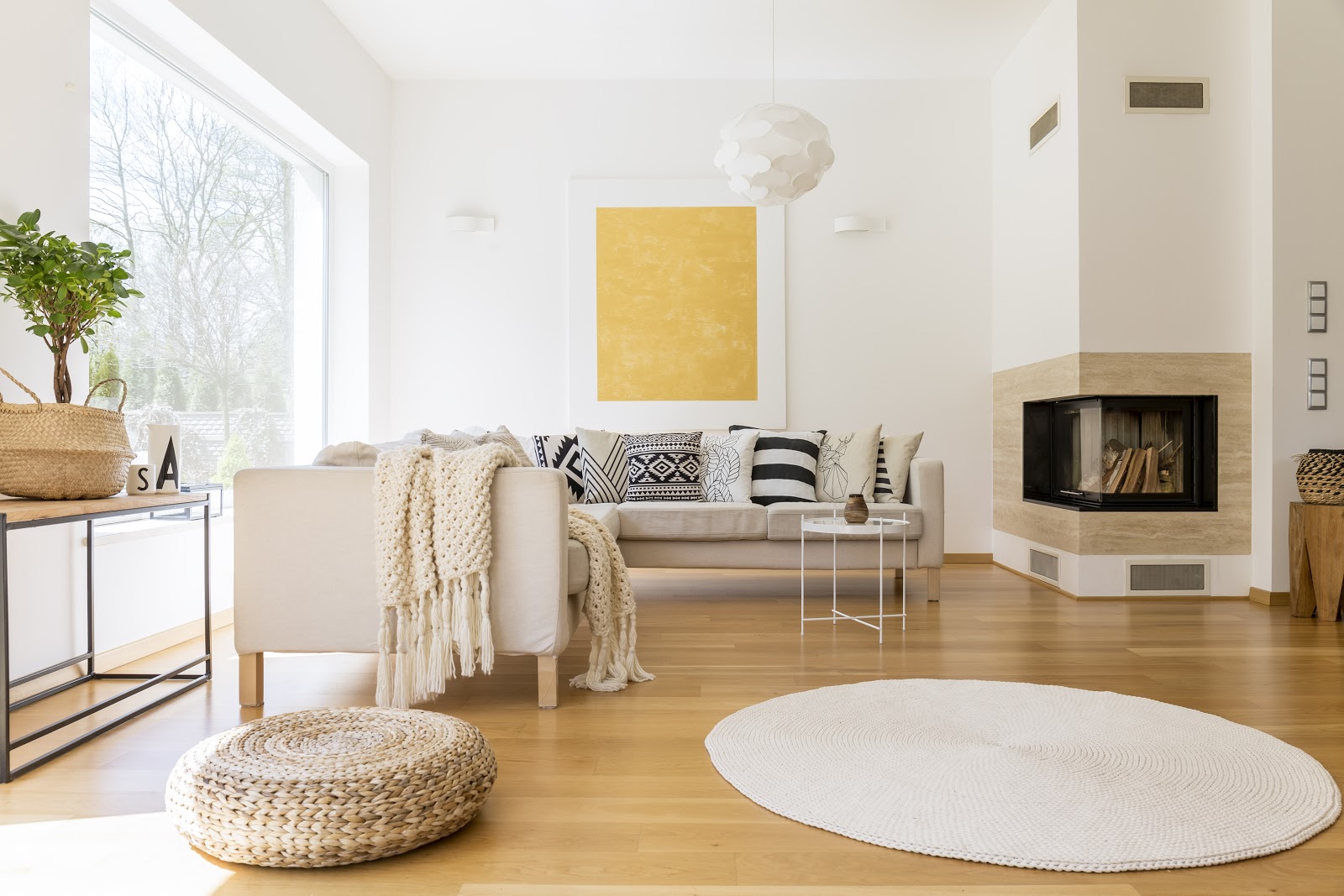
If you live in a home that was built between 1945 and 1980, it’s very likely that your living room doesn’t have any overhead lighting. There are many theories as to why this is, but the short answer is that overhead lighting wasn’t wanted in the living room during this time. Dimmer and cozier lighting was preferred to bright overhead lights found in the rest of the home. As a result, many older homes struggle with properly lighting the space. Luckily, today there is no shortage of options. From table and floor lamps to wall sconces and track lighting, there are no limits to how you can add lighting to your living room.
If you have multiple zones in your living room, consider adding lighting to compliment them and further define the space. You can work with a designer to figure out the best spots for which type of lighting and then connect with an electrician to install everything. Whether you want a dim and cozy room or one full of bright light, your pro will be able to help you achieve your desired look.
Below are the average costs of Electricians services across different cities in Canada:
| City | Average | Minimum | Maximum |
| Barrie | $2,995 | $100 | $27,200 |
| Calgary | $1,872 | $100 | $50,000 |
| Edmonton | $2,124 | $100 | $40,000 |
| Hamilton | $3,259 | $100 | $34,000 |
| Oshawa | $2,116 | $100 | $50,000 |
| Ottawa | $2,046 | $100 | $50,000 |
| Toronto | $2,968 | $100 | $50,000 |
| Vancouver | $2,742 | $100 | $50,000 |
*Costs based on 12850 verified Canadian homeowner reviews as of March 2022
While you can read all the tips, tricks and secrets you want, sometimes you just need to call in a pro to create the look you’re after. If you have a particularly tricky living room layout, or you just want someone to design it for you, you can always connect with interior designers on HomeStars. Take a look at past clients’ work and read reviews to find the right designer for you. Whether you call in a pro or just take their advice, we’re sure you’ll be loving your living room in no time.
Article Updated June 2022.
